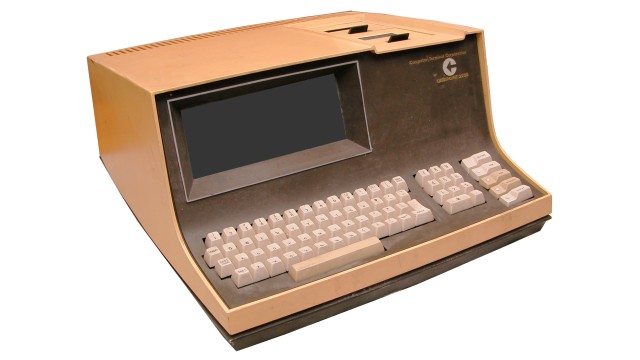
Datapoint 2200
Technical specifications of computer Datapoint 2200
Manufactured by: CTC
Launched: 1970
Manufactured in  USA
USA
CPU: Various TTL modules equivalent to the Intel 8008
Memory: 2 KB ~ 16 KB
Support: Magnetic tape reel
Hard drive:
Operating system: Datapoint O/S
Innovations: It was the first programmable mainframe terminal, allowing various terminal emulations to be loaded via tape, unlike most terminals of the time, which were not programmable to modify their behavior (hardwired).
Its original design called for an 8-bit microprocessor on a single chip for the CPU, rather than a conventional processor built from various TTL modules.
In 1969, CTC contracted two companies, Intel and Texas Instruments, to develop the chip.
Texas Instruments was unable to produce a reliable product and dropped out. Intel was unable to do so within CTC's timeframe. So Intel and CTC renegotiated their contract, resulting in CTC keeping its money and Intel retaining the finished processor.
Lacking the chip, CTC launched the Datapoint 2200 using around 100 different TTL components (SSI/MSI chips) instead of a single-chip microprocessor. Intel's chip, named the Intel 8008, was finally released in April 1972.
The seminal importance of the 8008 lies in the fact that it became the early ancestor of Intel's other 8-bit CPUs, such as the Intel 8080 and 8085, which were in turn followed by their 16-bit CPUs, the Intel 8086 and Intel 8088, which had a backward-compatible instruction set. These microprocessors, the 8086 and 8088, were the first members of the "x86 family," the name by which their instruction set was later known. Thus, it can be said that CTC engineers were the fathers of the most commonly used and emulated instruction set architecture from the mid-1980s to the present: the x86 family.